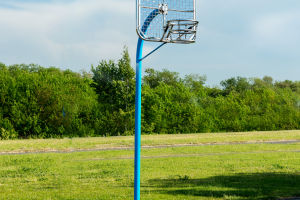Dirt bikes are a thrilling way to explore the great outdoors and enjoy an adrenaline-pumping ride. These machines are designed to handle rough terrains, and with the right techniques, they can offer an exciting and rewarding experience for riders of all levels.
In this article, we'll explore some tips for new beginners on how to ride dirt bikes safely and confidently.
Firstly, it's essential to understand that dirt biking is a physically demanding sport that requires skill, balance, and coordination. Before you get started, make sure you're physically fit and prepared for the demands of off-road riding. This includes wearing appropriate protective gear such as a helmet, gloves, boots, and goggles to keep you safe in case of falls or accidents.
When starting out, it's best, to begin with a small, lightweight dirt bike. A smaller bike is easier to handle and control, allowing you to learn the basics of dirt biking without feeling overwhelmed. Additionally, it's important to choose a bike that fits your height and weight, as a bike that's too large or heavy can be difficult to manage.
One of the most crucial aspects of dirt biking is body position. Maintaining the correct posture and balance on a dirt bike is essential for control and stability. Your weight should be distributed evenly on the bike, with your knees gripping the sides of the bike and your feet on the footpegs. Keep your elbows up and your back straight, and look ahead to where you want to go.
When starting, it's best to practice in a flat, open area without obstacles or hazards. Get a feel for the bike's throttle, brakes, and clutch, and practice starting and stopping smoothly. Once you're comfortable, you can start to work on basic riding skills such as turning, braking, and accelerating.
When turning, it's important to lean the bike into the turn and keep your weight centered over the bike. Use the throttle to control your speed and maintain a consistent speed through the turn. When braking, use both the front and rear brakes to slow down, and be careful not to lock up the brakes, which can cause the bike to skid.
As you gain more experience, you can start to tackle more challenging terrain, such as hills, jumps, and obstacles. However, it's important to always ride within your skill level and not attempt anything beyond your abilities. Start small and work your way up gradually, and always ride with caution and safety in mind.
Another important aspect of dirt biking is maintenance. Dirt bikes are designed to take a beating, but they still require regular maintenance to keep them running smoothly and safely. Check the tire pressure, oil level, and chain tension before each ride, and perform regular maintenance such as oil changes and filter replacements.
Finally, it's essential to always wear appropriate safety gear and ride with caution. Dirt biking can be dangerous, and accidents can happen even to the most experienced riders. Always wear a helmet, gloves, boots, and goggles, and avoid riding in hazardous conditions such as wet or muddy terrain.
Dirt biking is an exciting and rewarding sport that can offer a thrilling experience for riders of all levels. However, it's important to approach it with caution and safety in mind and to always ride within your skill level. With the right techniques, equipment, and attitude, dirt biking can be a fun and rewarding way to explore the outdoors and push your limits.


